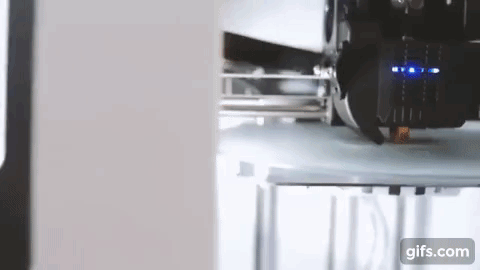FDM vs. SLA Printing
- Maryanne Olson
- Sep 6, 2016
- 3 min read
What are the advantages of FDM (or FFF) printing?

If you don’t already know by now, our ZEUS makes use of a style of additive manufacturing called FDM (Fused Deposition Modeling) or FFF (Fused Filament Fabrication). FDM-printing is touted for its ability to produce durable prototypes, rapidly and more safely than other forms of 3D printing (such as stereo-lithography or SLA). FDM printing produces parts that are stable and can actually be used for form and testing. With FDM printing, functional parts can be made with high accuracy – all dependent upon the resolution that you choose. Furthermore, multicolor prints (in the form of vertical coloring) is possible with FDM printing and the material(below) is much cheaper to buy than that of SLA printing.

How does it work?
In FDM printing, objects are built layer by layer from the ground up using directions that are determined through a program called a “slicer”. The slicer creates a “g-code” file that your printer can read, as a sort of map of where the physical extrusion will take place on your print bed. A thermoplastic (we use PLA) is heated and extruded onto the build plate according to the g-code file to create your object.


FDM is popular because it is quick and reliable. It is very simple to use and can even be operated in an office, school, or home setting. In schools, FDM is becoming increasingly popular for students, even at the elementary school level, to learn product development and design. ZEUS has been a great success in schools all over the world as students everywhere are adopting FDM technology to make their educational experience overall more fulfilling and useful for their future careers.


What are the advantages of SLA printing?
In SLA printing, liquid plastic is converted into solid objects. SLA printing is great for extremely detailed objects, such as jewelry, small figurines, or high resolution dental models. The resolution that can be achieved by SLA printing is much higher than that of FDM printing and can make for some really detailed prints and designs with very smooth surface finishes. However, the material used is very brittle and not practical for industrial or everyday use. Furthermore, the material used in SLA printing can be quite toxic and must be handled with extra care - the resin should not be touched by bare skin. For this reason, SLA printing is not the best choice for schools, libraries, or other public spaces. SLA printers generally cost much more than FDM printers, as do the resin materials needed to operate them. They can only print in a single color per print.



How does it work?
SLA printers do not extrude material like FDM printers do. Instead an SLA machine starts with an excess of liquid plastic resin (shown on the right), some of which is cured, or hardened, to form a solid object. In the initial step of the SLA process, a thin layer of photopolymer is exposed above the perforated platform. The laser hits the perforated platform, "painting" the pattern of the object being printed. The liquid hardens immediately upon contact with the laser, and the next layers each follow suit. The process is repeated until the object is complete, fully submerged in the tank of material. Once finished, the platform is raised to reveal the object. The final product must be washed off to remove any excess resin.

































Comments